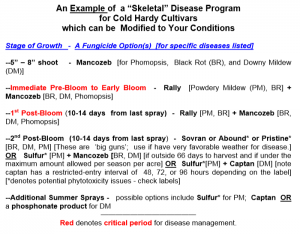Another meeting announcement of interest to fruit growers. New England Fruit Consultants conducts applied research and provides outreach/consultancy services to growers throughout New England. Please respond to the phone/email below if interested. -TB

New England Fruit Consultants
2015 Research & Demonstration
Field Day
New England Fruit Consultants in collaboration with Apex Orchards will present the results of this year’s field trials with various crop protection materials, growth regulators and other products that play an important role in crop production in New England. Pesticide license recertification credits (3.0) are available for attending the meeting.
Date :Thursday August 20, 2015
Location : NEFCON Research Farm / Apex Orchards
153 Peckville Road
Shelburne, MA 01370
Time : 9:00 AM – 2:00 PM
Directions : From all areas, take Rt. 91 or
Rt. 2 to the Greenfield rotary (exit 26)
Take Rt. 2 (Mohawk Trail) west 3 miles
to Peckville Road
Take right – orchard is 1/2 mile
If planning to attend, please R.S.V.P. by phone or email by Monday August 17th.
413-367-9578 (phone) TUnefcon
Program (3 pesticide re-certification credits)
9:00 AM – 9:30 AM – Welcome and orientation – coffee, juice and doughnuts
9:30 AM – 11:00 AM – Orchard tour of research and demonstration plots of interest
11:30 PM – 1:00 PM – Speaking program –
· Update on the Recent Fire Blight epidemics and Future Implications, Dr. Roberta Spitko
· Effective Management of Apple Maggot with Currently Available Tools, Dr. Rafael Vega
· Dealing Effectively and Constructively with Public Concerns about Pesticide Use at Farmer’s Markets and PYO Operations. Dr. Roberta Spitko
· Flyspeck and Sooty Blotch: Late-season Control Strategies, Mr. Glenn Morin
1:30 – ???? – Free B-B-Q lunch
 Catering by Bub’s B-B-Q
Catering by Bub’s B-B-Q
“Best barbecue in the PioneerValley for over 30 years”
B-B-Q Spare Ribs, Chicken, Pulled Pork Sandwich, Dill Potato Salad
Spicy “Dirty” Rice, Orange-glazed Sweet Potatoes
Announcement – Field Day 2015.pdf







